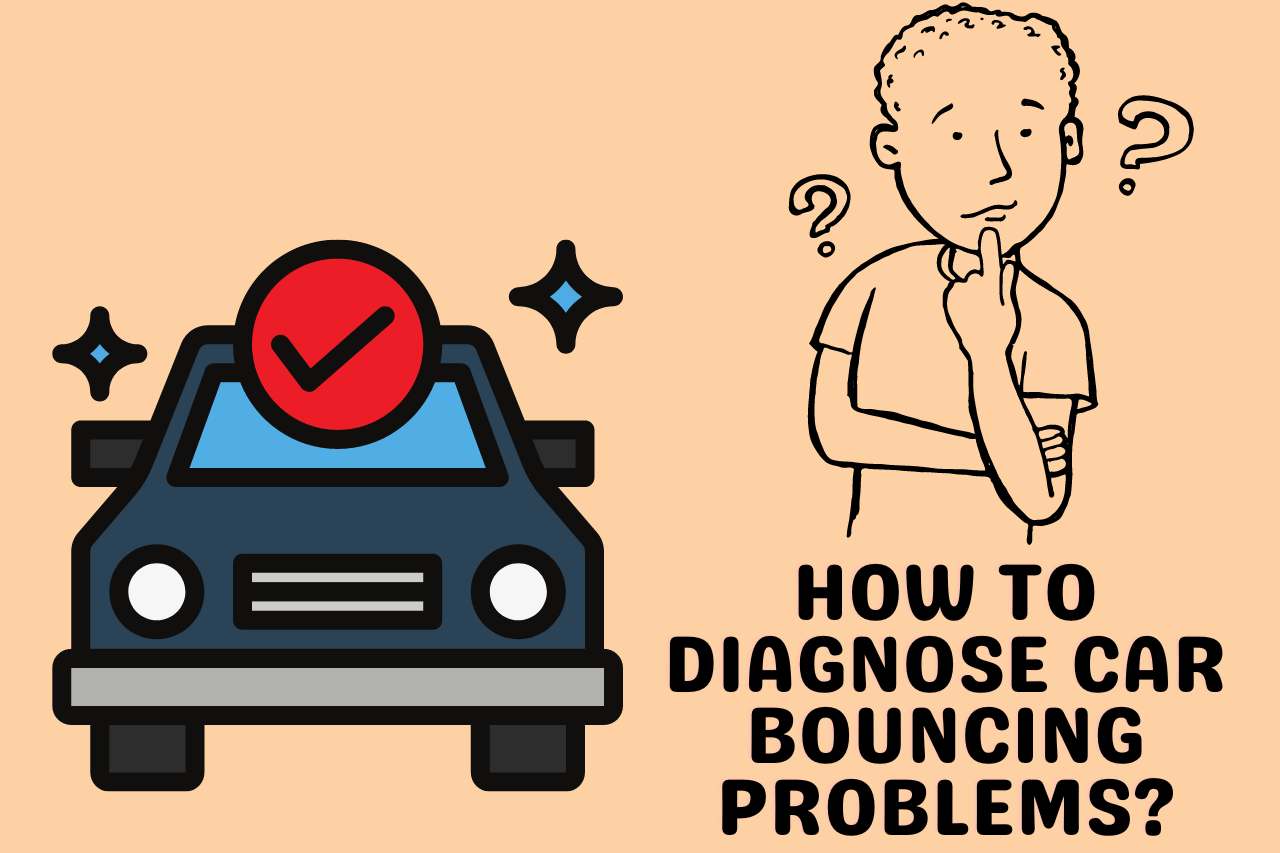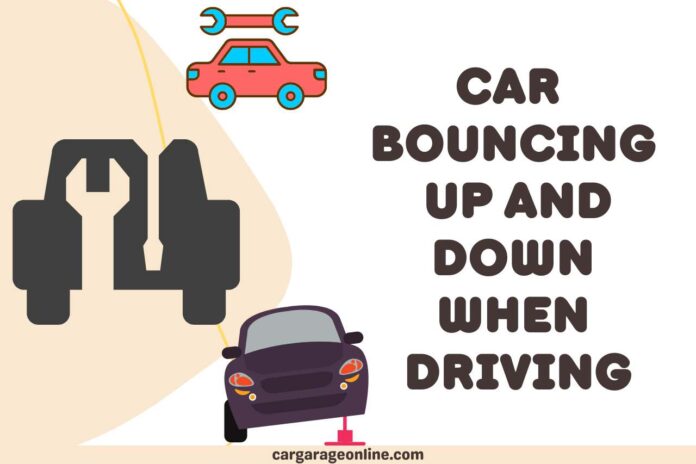Stability problems are typically caused by worn-out or damaged suspension parts. Is your own ‘car bouncing up and down when driving’? There could be a few reasons for this. There might be anything from straightforward to intricate factors.
Finding the cause is not always simple, but we will assist you in the process by highlighting the typical problems and how to address them. This article will assist you in identifying the problems, diagnosing the issue, resolving it, and avoiding similar problems in the future.
Why is My Car Bouncing Up and Down When Driving?
Poor Shock Absorption
Shock absorbers in your automobile are often to blame for your wheels bouncing. That shock absorber may be at fault for the bouncing your automobile experiences.
Bad Wheel Alignment
Poor wheel alignment is another factor that might cause your automobile to bounce. Springs might shift out of place when an axle is out of alignment.
Rusted Struts
The shock absorbers in your vehicle’s suspension are another typical cause of automobile bouncing. You risk having imbalanced wheels because of the shock.
Defective Tires
Your automobile will bounce more if your tires are bad. Tires that are in poor condition frequently lose air fast.
Tire Force
The performance of your automobile is always greatly influenced by tire pressure.
A Poor Suspension
Your automobile may bounce if your suspension isn’t working properly. The inadequate suspension in these cars causes them to bounce about.
Getting Over a Hump
If you drive over certain bumps in the path, your automobile can start to bounce automatically.
Systemic Steering Wheel Issue
Your automobile may be hopping as a result of a broken steering wheel mechanism, among other things.
Ball Joints that have Been Damaged
The broken ball joints within your automobile may also be the cause of its erratic behavior. Your car won’t be able to keep a straight, clean path when this occurs.
How to Diagnose Car Bouncing Problems?
The following techniques might help you identify typical problems causing a bouncing or unstable automobile.
When the Automobile is Parked, Check the Pressure Spots
Locate your vehicle’s front and back suspension after you have parked it. Place your hands on the outside of your automobile, close to the wheels, while you are positioned in front of it.
Only a small amount of movement ought to take place in your automobile as you apply that downward force. Overly noticeable movement indicates poor shocks or struts.

Examine the Steering
Driving requires you to experience the steering tire’s motion. If you are driving at a certain pace and feel the controls tugging to one side or the other, this is abnormal unless the roadway slopes to one side or the other. The cause of this type of instability or tugging effect is typically tied to a problem with the steering elements.
- Verify the tie rod.
- Examine the wear on the ball joints.
- Examine the steering arms that are included in the top and lower components.
- When determining the cause of instability problems, a vehicle’s tires are crucial.
Examine the Brakes
You can experience a grasp and release motion while pressing the brakes as you slow down. The Rotor warpage is shown by this. You can notice that the automobile begins to shift to its right and left when you use the stop. Pads for brakes that are uneven or worn out are also linked to this kind of movement.
How to Fix Car Bouncing Problems?
You can assist by doing some of the following things.
Invest in Good Tires
In order to solve this issue and keep yourself and those around you safe when driving, your automobile should have high quality tires.
Tires Should Be Properly Inflated
Your tires should be inflated appropriately after performing frequent tire inflation checks. On a label on the door to the driver’s side sill or within the owner’s handbook, you may discover the suggested tire pressure settings for your car.
Replace the Shock Absorbers
Most drivers are familiar with automobile bounces while on the road, typically as a result of worn shocks. The issue may be resolved by just changing the shocks.
Repair Any Damaged Struts
Replacement struts should be installed in lieu of the broken ones right away. This should lessen the issue of the car bouncing.
Ensure Correct Wheel Alignment
You ought to see a technician. With the aid of alignment tools, an expert can accomplish proper tire alignment.
Ball Joints Should Be Repaired
Ball joint repairs will take care of the issue. If you’re good at fixing cars, you could do this on your own or hire a pro to do it. (Adipex)
How to Prevent Car Bouncing Problems?
The following actions can be taken to stop automobile bouncing issues.
- Check that your tires are in good condition and aren’t worn down or damaged.
- In order to guarantee that it is inside the range that is suggested, check the inflation of your tires often.
- Maintain frequent inspections of the suspension parts of your vehicle and repair any damaged or worn out parts.
- To avoid this, get your wheels adjusted on a regular basis.
- Verify that you aren’t driving a vehicle that can’t manage your weight.
How Can Tire Problems Cause Car Bouncing?
Your automobile may be unstable if your tires have reached the conclusion of their useful lives. The tread on your tires may wear unevenly as well as create alignment issues if you don’t rotate them frequently enough.
Do not disregard the problem if one or more of the wheels are not round. Although your ride may not be significantly impacted, your car’s shocks and suspension may be.
A broken wheel rim prevents one of the tires from making good touch with the pavement, which can result in a lot of noise and nervousness that travels up via the steering column.
Why does Car Bouncing Occur When Driving Over Bumps or Rough Roads?
Consider any recent events that could have transpired that could have damaged your automobile as one of the initial items you should do.
The tires or rims might be damaged, and the alignment of your vehicle could be affected if you crash into a curb. Its car’s undercarriage, as well as its suspension, may be harmed if you bottom down.
If you often drive in challenging circumstances, your automobile will be more vulnerable to damage and require more frequent maintenance. Rough, uneven rides can be caused by improper tire mounting, poor tire alignment, and wrong pressure in the air (too poor, excessively high, or various levels of pressure across every tire).
Watch this one,
Video Credits – TheOriginalGabriel
You May Also Like







![What Is The Best Penetrating Oil For Seized Engine? [Explained] Best Penetrating Oil For Seized Engine](https://cargarageonline.com/wp-content/uploads/2022/07/Best-Penetrating-Oil-For-Seized-Engine-100x70.jpg)